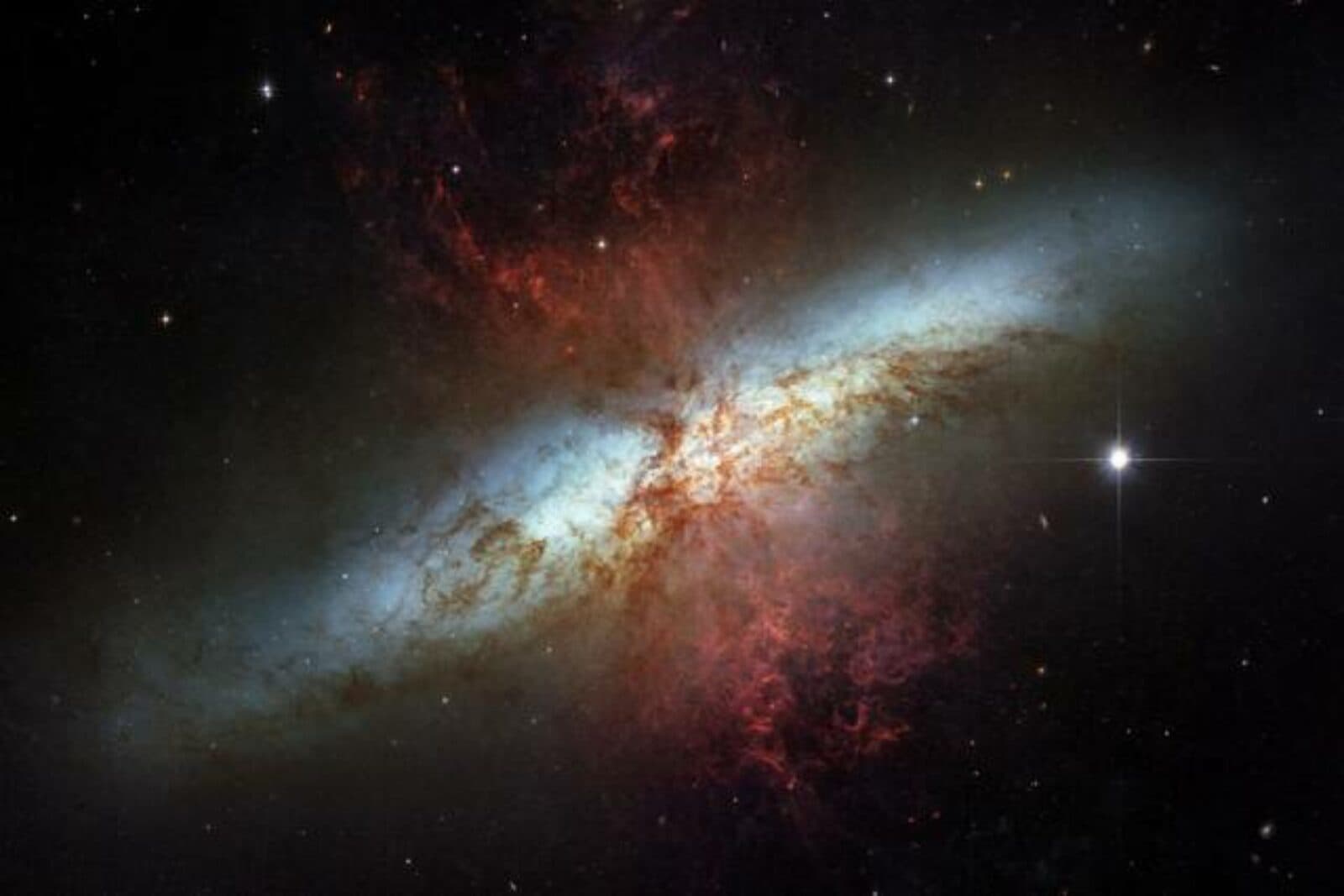Bright Star Shines Light on Mysterious X-ray Sources: A Q&A with MKI’s Deepto Chakrabarty

A newly discovered pulsar, the brightest ever discovered, raises questions about a mysterious category of cosmic objects called ultraluminous X-ray sources. Researcher Deepto Chakrabarty discusses the discovery and how to go about aligning our understanding of the universe with this new revelation.
October 26, 2014

A team of astronomers including Deepto Chakrabarty of the MIT Kavli Institute announced last week that they have discovered a pulsating star that appears to shine with the energy of 10 million suns. That makes it the brightest pulsar – a type of rotating neutron star that emits a bright beam of energy that regularly sweeps past Earth like a lighthouse beam – ever seen.
The pulsar is so bright that it’s classified as an “ultraluminous X-ray source,” a category of celestial object that’s too bright to be explained by any known process of stellar radiation.
The discovery, published in the journal Nature and made possible by observations with the Nuclear Spectroscopic Telescope Array (NuSTAR), raises even more questions about ultraluminous X-ray (ULX) sources. For example, pulsars are by nature not very massive objects and so have always been assumed only capable of relatively moderate X-ray signals. The fact that the newly discovered pulsar both doesn’t match that understanding and falls into the enigmatic ULX category only adds to the mystery.
The Kavli Foundation asked Chakrabarty, head of the astrophysics division at MIT and a member of the MIT Kavli Institute, what the discovery could mean for our understanding of the ultraluminous universe.
THE KAVLI FOUNDATION: The newly discovered object pulsates like a pulsar, yet our understanding of pulsars doesn’t allow for them to be this bright. Is the object necessarily a pulsar? Could it in fact be a completely new type of rotating object?

DEEPTO CHAKRABARTY: The behavior of these X-ray pulsations is so similar to that of the many well-known examples of X-ray pulsars that it’s unlikely the source is anything other than that. Everything we see suggests that the pulsations come from a rotating object, and the gradual evolution of the pulse period is consistent with what we would expect from a rotating neutron star. Once the pulsations were detected, their behavior was immediately very familiar to X-ray astronomers.
One important point to note is that black holes – which are what we previously thought all ULX sources might be – are unable to produce coherent pulsations like what we are seeing here.
TKF: What are the next steps in aligning our understanding of pulsars with this unexpected find? Is it up to theorists to figure out, or are there other telescopes we could point at the source to learn more?
CHAKRABARTY: Reconciling the conflict will definitely benefit from some thought by theorists! It is clear that some sort of specialized beaming may be going on here, but coming up with a sensible and self-consistent picture may be a challenge. Additional observations could be useful as well. Detecting direct evidence of the pulsar’s magnetic field strength would be very helpful, because it would remove any uncertainty about whether the pulsar has settled on a steady, or “equilibrium,” spin and thus luminosity. However, the source is probably too faint to measure this, even with NuSTAR's excellent sensitivity. Observing some more examples of ULX pulsars could be very helpful in sorting this out, giving us some different sets of system parameters to work with.
TKF: Do you expect more pulsating ULX sources to be found now that this one has been identified?
CHAKRABARTY: I’m optimistic that we will find more ULX pulsars, now that we know to look for them. Detecting pulsations in faint sources is challenging, because the X-ray data are not always collected with sufficiently high time-resolution to make the measurement. Our discovery will now justify the additional effort required to make such timing observations.
We hope to learn whether pulsars are common among ULXs – this is something that remains to be seen. Up until now, the widespread assumption has been that they are all black holes. Clearly that’s not the case, but I think it’s likely that some ULXs are indeed black holes. So understanding how these ones form and grow will also be an interesting area of study, one that should help us understand the broader question of how supermassive black holes form in the centers of galaxies.
— Kelen Tuttle, Fall 2014